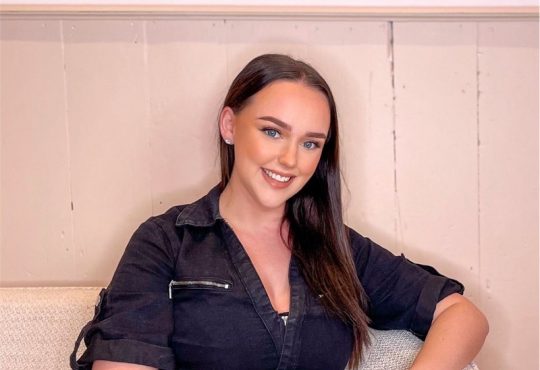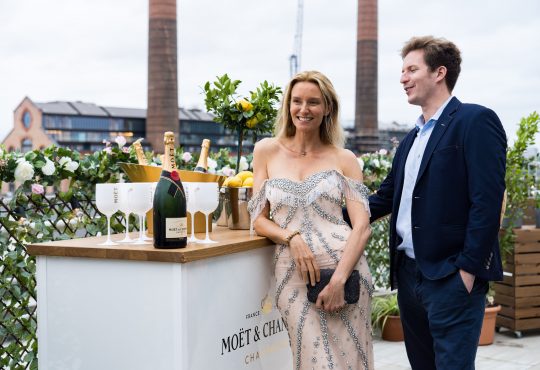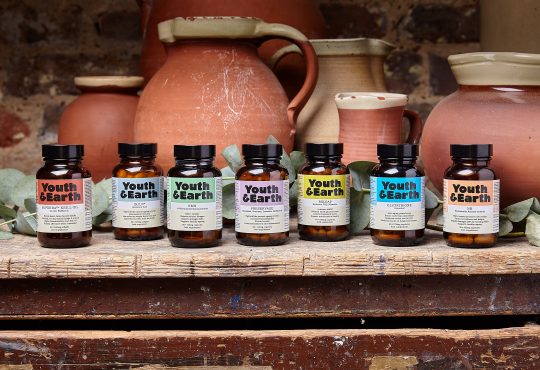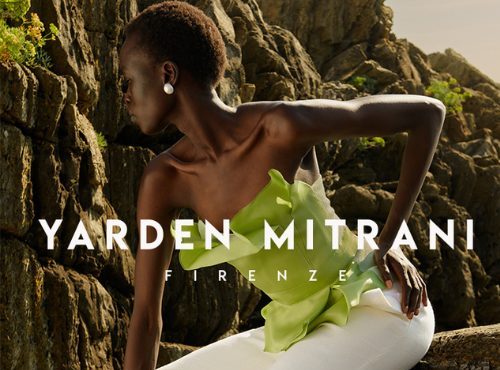
From a colourful past to nurturing a colourful present. Lincoln Townley has defied all odds by literally overcoming a life of sex, drugs, and alcohol to become an Artist who was recently described by renowned Actor, Sir Michael Caine as “the new Warhol”. So, who is Lincoln Townley? That´s the burning question that sprung to mind when I encountered echoes of his recent success. Luckily enough, he was in London last week so I popped into Soho Hotel to get an insight behind the enigma that is Townley.
Reading about you I was excited because your encounter with the art world is not through the traditional approach. However, your story is an inspiration, which portrays the perception that anyone with passion can use art as a vehicle to inspire change in his or her own life. You have also written a memoire called The Hunger. Could you give us an insight on your past?
When I was 8 years old, I would spend weekends with my grandfather who was an engineer and a self-taught painter. We would go out during the day and he would get me to draw people’s faces with charcoals. He taught me to cut wood, make stretchers, stretch the canvas and prime it to then start to paint.
From the age of 10 to 13 I was painting faces, I would go out to sketch then go back to the studio with my grandfather and the emphasis was to be able to think about what I had seen and express it in my own way.
When I was about 13 years old I wanted to go out with other boys rather than being with my grandfather. It all started to take its own path, probably the wrong direction. At the age of 15, girls come into the scene and when I was 18 I had my first child.
My father died of a heart attack and I had to work to support my son and help my mother. We lived in a council house in North London and we didn’t have anything.
Later on I got into sales, in my late teens I started working as an estate agent, and then moved into the transport industry. After 14 years working there I decided to do something completely different, I knew Peter Stringfellow, who is a businessman and nightclub owner, for 10 years already. He offered me to work selling the strip club and I accepted. At the time I was single so I moved into a flat in Old Compton street, in Soho.
From that point I started drinking, doing a lot of drugs, and from the nature of working in a strip club I had become probably the worst womanizer known to man.
I would be drinking from 2 o’clock in the afternoon, operating in the nightclub, sitting clients and looking after them. The club would close at 3-4a.m. when I would usually go to another bar, drink more and go back to my flat to paint.
I was being consumed by it and by the fourth year of all this I started to get drawn out anxieties. In the real height of my madness I used to do paintings and push them under my bed. I would find them the next morning and never remember painting them.
So we know about the dark side of your paintings. But where does your artistic influences come from?
My grandfather opened my eyes to art, and it was a baptism of fire. There was nothing classical about the way my grandfather painted. He used to paint very aggressively, and his portraits were quite scary, he would never show his work.
The bedrock of my painting is through Francis Bacon, those images where stuck in my subconscious, and I think I picked it them out when I was in Soho. It was the beginning of me wanting to use art as a cathartic way to express the demons I had in my head.
There is an evolution to my work, from the abstract expressionism of Francis Bacon to Pop-art, Andy Warhol and the way things are marketed. There are two sides to my work, one is from my subconscious, and the other comes from a desire to consume; my latest collection is called Consumption. Those expressional paintings represent the idea that we end up consumed by what we try to consume. When I lived in Soho, I wanted everything, I was poisoned and lost track of what life is really about.

Would you say art gave you a reason to change your life?
Soho was swallowing me up. I wasn’t going to be able to survive, I needed to stop drinking and using drugs and clean up and make something of my life. This was only 4 years ago.
I wrote a series of small stories, to look at why I behaved the way that I did. The Hunger was a mechanism that allowed me to create visuals through paintings.
One day my literary agent came around and I had a painting on the side of girl, a prostitute in Soho. She then asked me: where did you get that from? She was surprised to find out I painted it, and told me to put my work out there, promote it and talk about it.
This is a really big part of where I am today… by then I had probably painted around 80 paintings. My plan was to make something out of this, get the book published and get my paintings out there.
What challenges did you face during the initial stages?
I think it was the hardest time of being told I couldn’t do something, and that was part of the reason I was so determined to make this work.
I would go into a gallery with my portfolio and the manuscript from my book and before my work was looked at I would be asked, where were you trained? and told “ You are not going to be able to do it because your not trained in art, you haven’t gone to Goldsmiths or Saint Martins, we are not going to be interested.”
Once I went into a gallery, got a painting out and the manager of the gallery laughed at me turning towards her colleagues and said “You are in the wrong place” I didn’t stop and kept going. I am lucky and very determined. For me every NO is nearer to a YES.
I can imagine how challenging your artistic journey must have been, so how did you manage to overcome the initial rejections?
At that time I was working as a publicist for two hotels, I used the money I was earning to hire an exhibition space at the Riflemaker, in Beak Street. I advertised the show and contacted people I knew from when I was running the club in Soho. I exhibited 15 paintings and sold all of them in two days. That is when I met one of my biggest collectors, David Sullivan.
No doubt your life is an example of perseverance and self-confidence that reaches across…
We are in Soho right now, Soho is known for sex, drugs and alcohol everything that you left behind, now that your emerged in the art world how has this changed your perception on this area of London?
When I gave up drinking I had to move away form Soho. Once you become addicted to alcohol and drugs I don’t think it ever leaves you. It is a constant reminder and I think there are energies in the world that you pick up that will make you feel strangely confortable and then very uncomfortable.

So, where do you paint now and in which conditions?
I have been working in a garage for 3 years. I don’t work anywhere else. I have one strip light above my head. Its like a bomb is gone off in it. But that is the environment I need, I need chaos, I need to be able to feel at home there, I need my man cave in order to produce this images.
No one else gets involved with my artistic process. There is a big satisfaction from knowing that I go from bits of wood, a bare canvas to creating a painting. The enjoyment factor in the process is that moment I actually know I have captured the image of someone.
What makes you choose famous figures as your Motif for portraits?
I have always been really interested in people’s faces and expression. My grandfather always used to tell me that when I feel that I want to paint someone it is usually for a good reason.
When I paint famous people I am looking at the person, not at the characters they play. In most cases, people are always acting. When you meet someone for the first time they show you what you want to see.
One of the reasons why I started the ICONS collection is because I wanted to be able to portray people, the way I think they are seen, with barriers and I am interested in that.
Do you now feel welcome in the art sphere?
Yes, overwhelmingly welcome. It is strange to think four years ago I was breaking the top of a suitcase to fit my portfolio, wheeling it from one gallery to another with no luck, and now I am approached by galleries who want to know more about my work. In October I will be doing a 6 year retrospective of my work at the Saatchi Gallery, in Chelsea.
Andy Warhol said, “Being good in business is the most fascinating kind of art. Making money is art and working is art and good business is the best art.”
2016 is already turning out to become a successful year for you as we just found out you were commissioned to do a portrait on the BAFTA recipients. Now, is that part of your overall strategy as an artist?
Yes, if I sell my art I can make more art. You’ve got to think like a businessman when you’re away from the canvas. When I am in front of the canvas and painting I am not thinking about selling it, only when I finish I think about selling it. I painted six honourees for BAFTA LA in two weeks, I didn’t leave the garage for 4 days, I would sleep on a small arm chair in the garage. That’s what it takes, that is the commitment.
Recently you did a painting for one of our local icons, here in Chelsea Sir Michael Caine… how did all this come about?
When I was working with BAFTA in October, I went to their offices and saw a black and white photograph of Michael Caine. I painted him as Alfie (1966) and as Harry Brown (2009), in effect trying to cocoon him in film. I finished it just after Christmas, showed to a friend who showed it to Shakira (Michaels wife). I then got an email from her saying Michael loved the painting and that he wanted to meet me.
When we met up he said some amazing things; I was sort of blown away. He said I knew Andy Warhol, he used to paint those soup cans and we all used to think what is he doing? He said to me he thought I was the next Andy Warhol.

You have 197.000 followers on twitter, we can now see the effects that social media has had on the creative industries, so what role would you say social media has had in your development as an artist so far?
Huge, I started using social media to express the way I felt about my art. People go into my twitter account, and see I have a lot of followers, different artist, curators, art dealers, galleries, when they see my outreach they become curious about what I do. In a way I am creating my own news line, building that community in social media gets more people interested in you.
What are your future plans as an artist?
Well I am doing a show of all the original ICONS, at the Royal Academy on the 2nd of June. I am using that as a platform to launch the ICONS into other countries, currently looking at Saint Petersburg, the Middle East, Dubai, New York… I am currently in a gallery at Beverly Hills, called Art Angels, they hold my ICONS work there and also in a gallery in Mayfair.
Are you hungry to explore new mediums of art?
At the moment I have just started talking to a production company, about making The Hunger into a film, its something that I have taken on board in the last week. I am 43 now, if I look further along the line by the time I am 50 my goal is to have made a film about the human spirit.
Lastly, bearing in mind there has been a massive change within several sectors of the creative industry that have had an impact of how its distributed, marketed and consumed.
What is your personal opinion on the way the art world will look like in the future?
I think that the thought of someone walking through the door to come and view a piece of art in the wall is over. I believe the traditional ways in which art has been sold, will soon disappear. I think you need to use the social media environment even if you start with one follower. One day someone is going to look at what you do and be really interested and curious about it.
Your creativeness in selling is just as important as what you create, that is the one thing I would say to anyone.
Visit: www.lincolntownley.com
For more information on Chelsea Monthly Arts section. Email: joana@chelseamonthly.com or follow us @ChelseaMonthly









